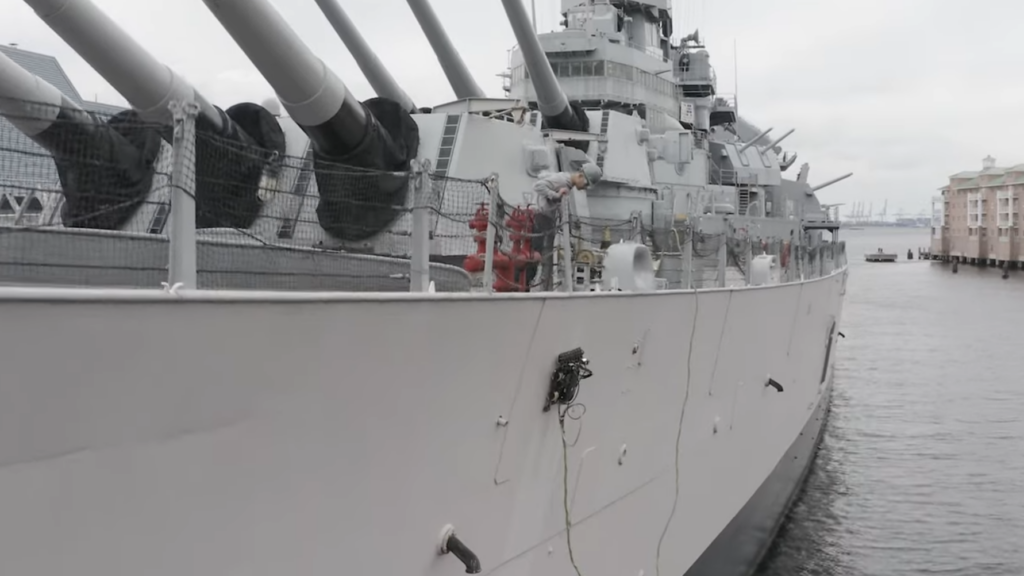
A Gecko Robotics’ robot sweeps the side of a Navy ship. (Screen via a video by Gecko Robotics.)
WASHINGTON — Pennsylvania-based Gecko Robotics today announced the US Navy has expanded its use of the company’s hull-scaling robot, designed to detect structural integrity problems, to its first amphibious assault ship as well as an additional Arleigh Burke-class destroyer.
“We are proud to have a mature technology that has been tested and approved by both Navy technical leaders and the sustainment officials charged with reducing the Navy’s maintenance backlog,” said the company’s CEO Jake Loosararian in a press release. “The sailors of the U.S. Navy have a vital mission in an increasingly complicated geopolitical environment and Gecko stands with them to make sure they have the tools they need to do their jobs safely and effectively.”
The company did not disclose in its release the value of the work or the specific vessels its been hired to inspect. A Navy spokesperson did not respond to Breaking Defense’s questions about the announcement by press time.
Gecko, which was founded in 2013, designs and produces robots capable of scaling a ship’s hull to detect and predict areas of the vessel that may be prone to structural failure. The one in use by the US Navy weighs 50 pounds.
It’s part of a strategy the Pentagon refers to as “predictive maintenance,” designed to avoid big problems by catching them when they’re small. And although the service frequently discusses a desire to employ it, the Navy has had varying levels of success in cutting down ships’ time stuck in port.
For its part, Gecko officials told Breaking Defense in an interview their robots, which require just one or two operators, are capable of collecting exponentially more data points on a given vessel in the same time as a team of more than a dozen shipyard workers working simultaneously.
“The labor shortage is also another key aspect of why robots are very, very critical in this dry dock environment,” said Ed Bryner, the company’s director of engineering. “What traditionally took four days to collect 3,000 data points manually with a team of 10 to 15 individuals… we were able to do it with one robot [and] two humans with that robot and collected over 8 million data points.”
Loosararian and Bryner said their robots do not sweep an entire ship, but rather the Navy directs them to key areas, such as the flight deck, ballast tanks or the rudders, depending on the circumstances. The robot conducts its sweep of the area and uses a variety of technologies to build a digital twin, a replica of the ship assembled as a model on a computer. Using artificial intelligence and machine learning, Gecko’s software flags areas of concern for shipyard workers.
The company said to date it has mostly worked on destroyers, some of which were forward deployed to Japan, and has been in discussions with the service about sweeping submarines. A company spokesman said Gecko has previously scanned six Navy ships, not including the two mentioned in today’s announcement.
As for the Pentagon as a whole, the Government Accountability Office recently reported the military services were directed to begin using “predictive maintenance” more than 20 years ago, but the progress has been “minimal” up until recently.
“GAO found that the military services have not consistently adopted and tracked implementation of predictive maintenance. By developing plans to implement predictive maintenance, including action plans and milestones for weapon systems, the military services would be better positioned to determine where, when, and how to effectively adopt predictive maintenance,” according to the watchdog.
Major trends and takeaways from the Defense Department’s Unfunded Priority Lists
Mark Cancian and Chris Park of CSIS break down what is in this year’s unfunded priority lists and what they say about the state of the US military.


























